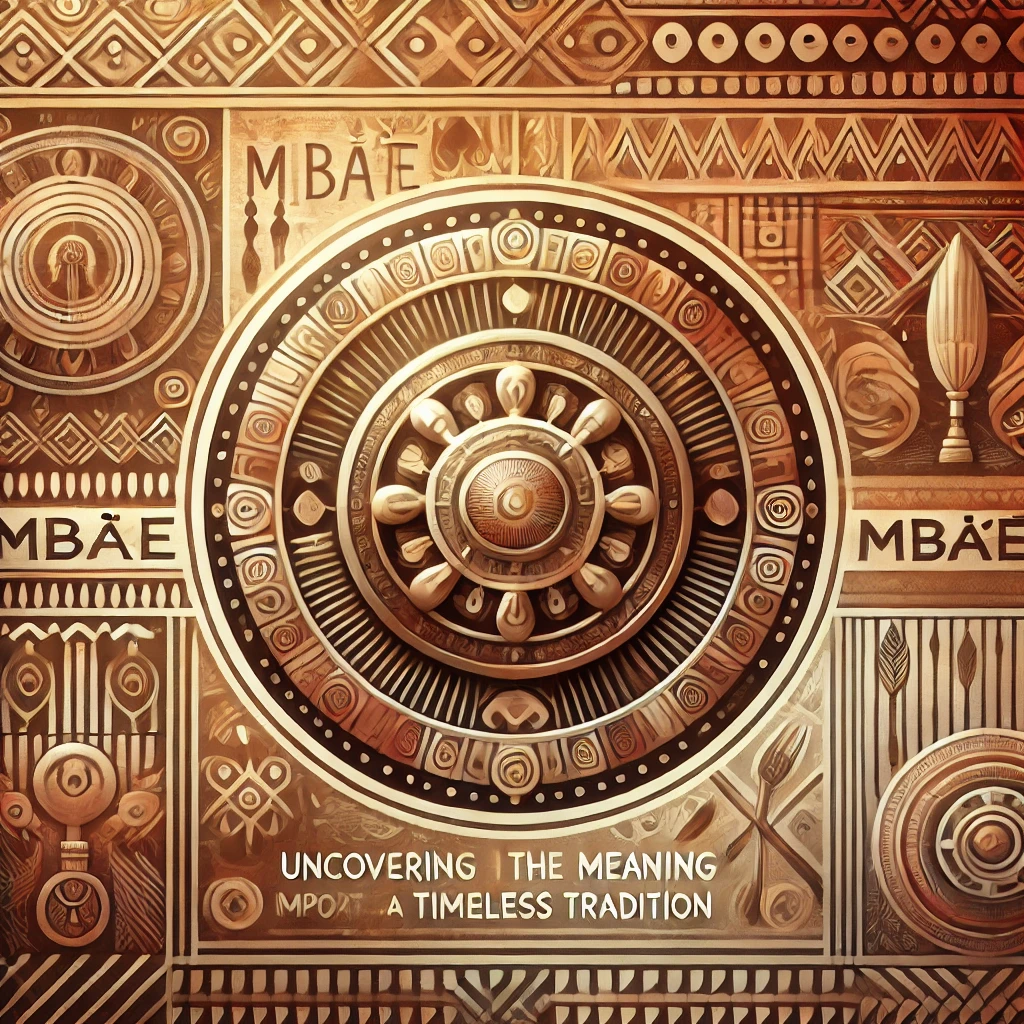The term mbaññe carries deep cultural significance, symbolizing unity, tradition, and personal reflection. Originating from ancient communities and still practiced in some form today, mbaññe represents more than a simple word or tradition—it is a living, evolving part of cultural identity. Whether in its historical roots or modern-day relevance, mbaññe continues to inspire individuals and communities.
This article delves into the origins, rituals, and contemporary adaptations of mbaññe, exploring how it influences culture, global recognition, and personal reflection.
The Etymology and Evolution of Mbaññe
The word mbaññe has an intriguing etymology that has evolved through centuries. Its exact linguistic roots remain debated, as it draws influences from several indigenous dialects. Initially used to describe specific cultural ceremonies, the term has evolved over time to represent a broader idea of communal gathering, reflection, and tradition.
The ambiguity surrounding the origins of mbaññe only adds to its mystique, as oral traditions have preserved the term across generations. Today, mbaññe not only represents the rituals it originated from but has also grown to symbolize deeper concepts of cultural continuity and unity.
Cultural Significance and Symbolism of Mbaññe
For many communities, mbaññe is more than just a practice—it’s a way of life. Embedded in its rituals are core values of respect, connection, and heritage. The cultural significance of mbaññe lies in its ability to bring people together and honor both individual and collective milestones.
In many societies, mbaññe serves as a symbolic bridge between the past and the present. Through its rituals, participants honor their ancestors while passing down traditions to future generations. This intergenerational transfer of knowledge helps ensure that the values and customs associated with mbaññe remain alive.
Key symbols in mbaññe practices include music, dance, and traditional attire. The specific symbols may vary from one community to another, but they universally represent continuity, respect, and communal support.
Rituals and Traditions Associated with Mbaññe
Mbaññe is rich in rituals that often include dancing, music, and symbolic ceremonies. While specific practices may differ across regions, certain elements remain universal.
-
Dance
The dances performed during mbaññe are not just for entertainment; they tell stories and convey emotions. Every movement in the dance is symbolic, with participants wearing traditional attire that reflects their cultural heritage.
-
Music
Music plays a central role in mbaññe rituals, setting the rhythm for dances and other ceremonies. Traditional instruments, such as drums and flutes, are often used, with each instrument contributing to the collective mood and meaning of the ritual.
-
Communal Feasting
After the ceremonial activities, participants often share a communal meal. This aspect of mbaññe symbolizes unity, bonding the community through the simple act of sharing food.
-
Rites of Passage
In many communities, mbaññe marks important life stages such as birth, marriage, and death. Each rite of passage is celebrated with unique rituals that emphasize the individual’s journey and connection to the wider community.
Mbaññe in Contemporary Life: How It Adapts to Modernity
As the world continues to evolve, so does mbaññe. While deeply rooted in tradition, mbaññe has adapted to fit contemporary lifestyles without losing its essence. In urban areas, modern variations of mbaññe are practiced, integrating elements of both traditional and modern culture.
In some communities, mbaññe has become a symbol of cultural resilience in the face of modernization. For people who have migrated to cities, mbaññe serves as a way to stay connected to their heritage. This adaptability has allowed mbaññe to thrive in both rural and urban settings.
Modern adaptations often include incorporating new instruments into traditional music or altering dance styles to fit contemporary tastes. Despite these changes, mbaññe’s core values of community, respect, and connection remain central.
Global Recognition and Influence of Mbaññe
In recent years, mbaññe has gained global recognition, particularly in cultural and academic circles. Scholars, artists, and cultural enthusiasts have taken a keen interest in studying and preserving mbaññe’s traditions.
Mbaññe has been showcased at international cultural festivals, providing a platform for communities to share their heritage with a global audience. This global recognition has also raised awareness about the importance of preserving indigenous practices.
However, with this recognition comes challenges. Some fear that mbaññe may be appropriated or commercialized, losing its original meaning. Communities are now working diligently to ensure that mbaññe remains true to its roots while embracing global interest.
How Mbaññe Can Transform Personal Perspectives
Beyond its cultural significance, mbaññe has the power to influence personal perspectives. Participating in or even learning about mbaññe can foster a sense of connection with the broader human experience.
Mbaññe encourages mindfulness and reflection, reminding individuals of the interconnectedness of life. Whether it’s through symbolic dance, music, or communal activities, the practice of mbaññe prompts individuals to pause and appreciate the moments of connection they might otherwise overlook.
In a fast-paced world, taking part in mbaññe rituals—or simply adopting its principles—can offer a sense of peace and clarity, grounding individuals in both their personal heritage and the larger global community.
Preserving the Legacy of Mbaññe for Future Generations
One of the greatest challenges facing mbaññe is the preservation of its traditions for future generations. As modern influences permeate traditional cultures, maintaining the authenticity of mbaññe requires dedicated effort from cultural organizations, educators, and community leaders.
Efforts are being made to document mbaññe rituals, including video recordings of dances and music, as well as written records of oral traditions. Educational programs have been established to teach the younger generation about mbaññe, ensuring that they remain connected to their roots.
Technology has also played a key role in preservation, with online platforms allowing communities to share their mbaññe practices with a wider audience while maintaining cultural ownership.
Mbaññe in Popular Culture: Examples in Art, Music, and Literature
As mbaññe continues to gain recognition, it has also started to influence popular culture. Artists, musicians, and writers have drawn inspiration from mbaññe, incorporating its values and symbols into their work.
In literature, mbaññe often appears as a theme of continuity and reflection. Writers explore the deep meanings associated with mbaññe rituals, highlighting the significance of community and tradition in a rapidly changing world.
Similarly, in art and music, mbaññe’s influence can be seen in the use of traditional symbols, instruments, and themes. Through creative expression, artists are helping to keep the spirit of mbaññe alive, ensuring its relevance in modern culture.
Conclusion: The Enduring Power of Mbaññe
The power of mbaññe lies in its ability to transcend time, adapting to modernity while preserving its core values. Whether through rituals, music, or personal reflection, mbaññe continues to unite people and honor cultural traditions. As it gains global recognition, mbaññe remains a symbol of resilience, community, and connection.
By understanding its origins, participating in its rituals, and reflecting on its values, we can ensure that mbaññe remains an integral part of our cultural and personal landscapes for generations to come.
FAQs
What is mbaññe?
Mbaññe is a cultural practice deeply rooted in tradition, symbolizing unity, respect, and continuity. It includes rituals such as dance, music, and communal activities that foster a sense of connection and cultural identity.
Where did mbaññe originate?
Mbaññe originated from ancient indigenous communities and has evolved over centuries, though its exact origin remains debated due to the oral traditions that have preserved it.
How is mbaññe practiced today?
Mbaññe is practiced both in traditional rural settings and adapted for urban environments. It maintains its core values while incorporating modern elements like updated instruments and styles.
What role does mbaññe play in modern society?
Mbaññe serves as a bridge between the past and present, helping communities stay connected to their cultural roots while adapting to contemporary life. It also fosters mindfulness and reflection in personal life.
How can we preserve mbaññe for future generations?
Preservation efforts include documenting rituals, teaching mbaññe in educational settings, and using technology to share and protect the traditions from appropriation or loss.


